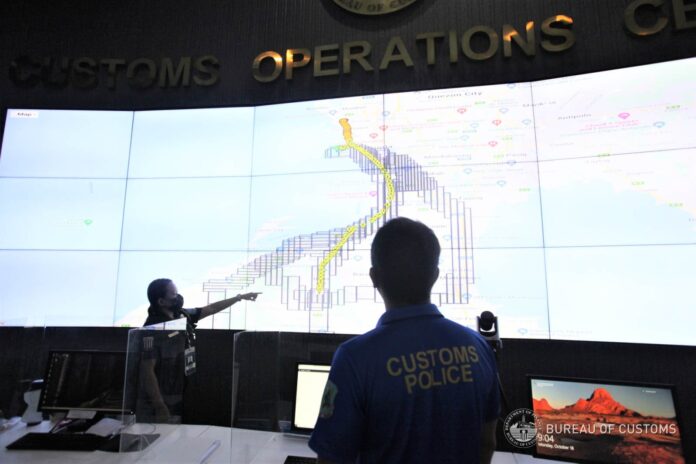-
The Bureau of Customs recorded 189,003 completed trips during the Electronic Tracking of Containerized Cargo System implementation from January to September 2021
-
There were 67 alarms which later turned out to be no violations
-
Cargoes were processed by the collection districts of the Port of Manila, Manila International Container Port, Batangas, Subic, Cebu, Davao, and Cagayan De Oro
-
Majority of the completed trips (106,009) were destined for economic zones under the Philippine Economic Zone Authority
The Bureau of Customs (BOC) recorded 189,003 completed trips and 67 confirmed alarms on transit cargoes during the implementation of its Electronic Tracking of Containerized Cargo (E-TRACC) System from January to September 2021.
Of the total completed trips, 106,009 were destined for economic zones under the Philippine Economic Zone Authority (PEZA); 47,613 were for cold storage facilities; 19,475, customs bonded warehouse (CBW) imports; 11,861 trips, container yard/container freight station accounts; 2,688 trips, CBW exports; and 645 were condemned trips.
The cargoes were processed by the collection districts of the Port of Manila, Manila International Container Port, Batangas, Subic, Cebu, Davao, and Cagayan de Oro, according to the latest report of BOC’s Assessment and Operations Coordinating Group.
Aside from completed trips, BOC recorded 67 confirmed alarms during transit, which led to the issuance of 67 mission orders for pursuit operations. Upon inspection, all 67 alarms had no violation.
READ: BOC orders e-tracking of cargoes in transit
Launched in 2020, the E-TRACC is a web-based system developed to track the inland movement of containerized cargoes during transit and transfer to other customs territories and facilities. It allows BOC to track, monitor, and audit the location and condition of cargoes, as well as obtain real-time alarms on diversion and tampering of cargoes.
Under Customs Memorandum Order (CMO) No. 04-2020, which provides guidelines for the system, an electronic customs seal (ECS) is required during the transfer of cargo to a container yard/container freight station or other customs facilities and warehouses; transit of cargo bound for Free Zones, inland customs office, depots, or terminals; transit to CBWs; export of cargo from Free Zones, inland customs office, depots or terminals, and CBWs to port of loading; and transfer of shipments subject to further verification and/or monitoring.
The system has an alarm feature to detect diversion and tampering. The alarms are categorized into five, namely, corridor alarm or route deviation—a vehicle has deviated from normal routes; unauthorized start trip—a vehicle has departed origin before the control tower has authorized the start trip; tamper alarm—the cable of the electronic customs seal is cut or the seal has been disengaged; missing heartbeat–the device has not transmitted a signal for more than three minutes; and unauthorized end trip—the container has reached the destination, but the electronic customs seal was disengaged before the control tower authorized the end of the trip.
“The E-TRACC system remains a vital tool for BOC in identifying and preventing illegal activities during the movement of cargoes such as erroneous delivery of containers, missing containers, or unauthorized diversion,” BOC said.
READ: BOC eyes E-TRACC application in airports
E-TRACC has been gradually implemented across various sea ports and destinations and covers exports and inter-island import shipments. Last August, BOC held a public consultation on the proposed implementation of E-TRACC in all airports of entry.





